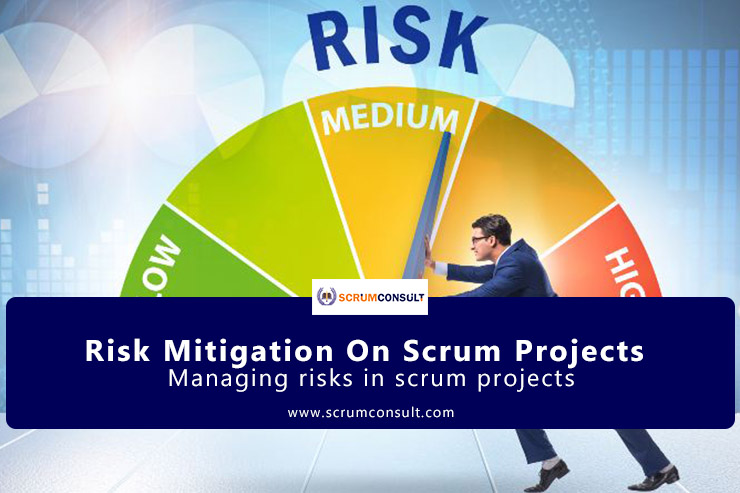Risk mitigation is an essential aspect of managing Scrum projects effectively. While Scrum provides a framework for iterative and incremental development, it also offers strategies for identifying, assessing, and addressing risks throughout the project lifecycle. Here’s how risk mitigation is approached in Scrum projects:
In Scrum, risk identification is a collaborative effort involving the entire Scrum Team. During Sprint Planning, Sprint Reviews, and Sprint Retrospectives, team members actively discuss potential risks that may impact the project’s success. Risks can be related to technical challenges, dependencies, stakeholder expectations, market conditions, or external factors. By fostering open communication and transparency, the Scrum Team can identify risks early and proactively.
Once risks are identified, the Scrum Team collaboratively prioritizes them based on their impact and likelihood. Product Owners play a crucial role in this process by providing insights into the business value and impact of each risk. By prioritizing risks, the team can focus their efforts on addressing the most significant threats to project success first.
Scrum encourages the use of iterative and incremental approaches to mitigate risks. Instead of attempting to address all risks upfront, the team identifies quick-win mitigation strategies that can be implemented within the current Sprint. This may involve breaking down complex tasks, conducting spike solutions, or seeking early feedback from stakeholders. By taking incremental steps to mitigate risks, the team can reduce their impact and increase the likelihood of project success.
Risk management is an ongoing process in Scrum, requiring continuous monitoring and adaptation. During Daily Scrums, team members discuss any emerging risks or impediments that may affect Sprint goals. Product Owners and Scrum Masters provide support and guidance to help the team address these risks effectively. Additionally, Sprint Retrospectives provide a valuable opportunity to reflect on past risks and identify improvements to the team’s risk management practices.
Scrum embraces change and uncertainty, allowing teams to adapt their plans in response to evolving risks and market conditions. If new risks emerge or existing risks escalate, the Scrum Team collaboratively adjusts their Sprint backlog and Sprint goals to address these challenges. By embracing an adaptive planning mindset, teams can respond effectively to changing circumstances and minimize the impact of risks on project outcomes.
Overall, risk mitigation in Scrum projects involves proactive identification, prioritization, iterative mitigation, continuous monitoring, and adaptive planning. By integrating risk management into the Scrum framework, teams can increase their resilience, improve project outcomes, and deliver value more effectively in dynamic and uncertain environments.
To learn more about Scrum Master Certification, Agile Transformation, Project Management, Product Owner, 6sigma, lean 6sigma, SMC, PSM and CSM, kindly visit scrumconsult.com

